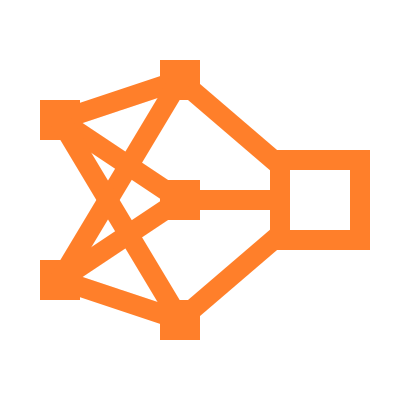Week 1: Your First Neural Network
🎯 In this lesson, you will:
- Understand what machine learning is and how it works
- Explore image classification using drawing tools and datasets
- Experiment with neural networks and tweak simple models
Get the Slides
Get the Worksheet (Make a Copy)

🎨 Starter Activity: Image Classification in Action
Use AI to guess your drawing:
👉 Quick, Draw! (Use incognito mode if it doesn’t load)
Explore the dataset of doodles (this is how the AI learnt):
Take some time to browse and discover the variety of doodles collected.
Try this alternative if Quick Draw doesn’t load:

🤖 Theory: What Even Is Machine Learning?
Machine learning is when computers learn from data - not just rules.
Instead of being told exactly what to do, they look at patterns in data and use those patterns to make predictions or decisions.
ML powers things you use every day, like:
- 🎬 Netflix recommendations (based on what you’ve watched)
- 📱 Face ID on phones (learns to recognize your face from many angles)
- 🚗 Self-driving cars (detects objects, follows road rules, reacts in real time)
- 💬 Chatbots and voice assistants (understand and respond to human language)
It follows a methodical process as shown in the diagram below (but don’t worry too much about this yet!)

🧠 How it works (simplified!):
- Feed in data — like thousands of pictures of cats and dogs
- The computer learns patterns (e.g. “cats usually have pointy ears”)
- It can then make predictions on new, unseen data (e.g. “this is probably a dog”)
Think of it like teaching by example, not instructions.
📺 Task: Watch this video on how machine learning models work
🤔Discussion: Where Have You Seen Machine Learning in Action?
- What are some examples of machine learning you’ve encountered in daily life?
- How do you think ML improves or changes these experiences?
- Can you imagine future uses for ML that might surprise us?
- Bonus: Take a closer look at the Quick Draw Dataset — what patterns or surprises do you notice in the drawings collected?
Feel free to share your thoughts, questions, or cool examples you find!

🧩 Theory: What’s an Algorithm?
Imagine you want to teach a computer to recognise cats and dogs. You give it lots of pictures, and it learns by following a set of step-by-step instructions to find patterns — like pointy ears or fluffy tails.
These instructions are called an algorithm - a recipe a computer follows to solve a problem or complete a task.
In machine learning, algorithms help computers learn from data so they can make predictions or decisions.
🧪 Task: Let’s Test Some Different Algorithms
Explore and experiment with different machine learning algorithms! Try changing the number of neurons and other settings to see how they affect the model’s learning and predictions.
this section might need some more explicit instructions !!!
extension - try and get the quick, draw computer to make a correct guess with only one line drawings!
🎟️ Exit Ticket
Please complete the exit ticket to share your thoughts and reflections
 Google Docs Lesson 1 Exit Ticket 🎟️
Google Docs Lesson 1 Exit Ticket 🎟️
🚀Keep going!
Before we get started This Lessonhttps://www.notion.so/Starter-231de41203f28011b513f4811d7aa59c?source=copy_link
StarterWhat even is machine learningHow it works📺 Task: Watch this video on how machine learning models work
